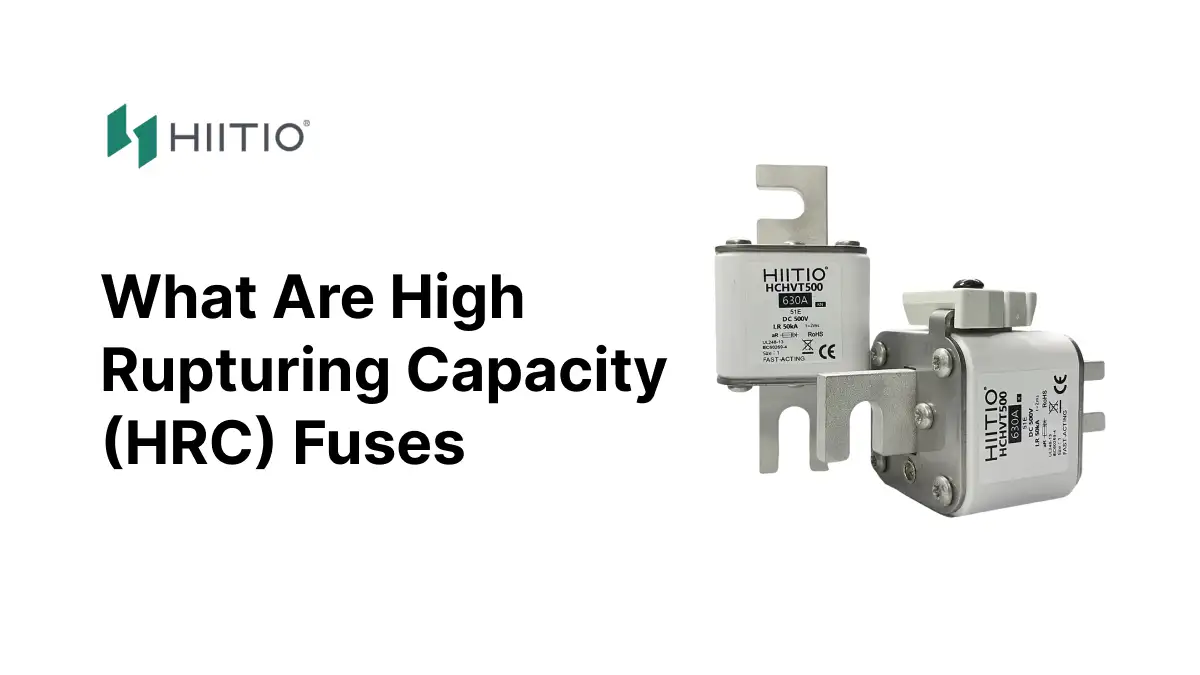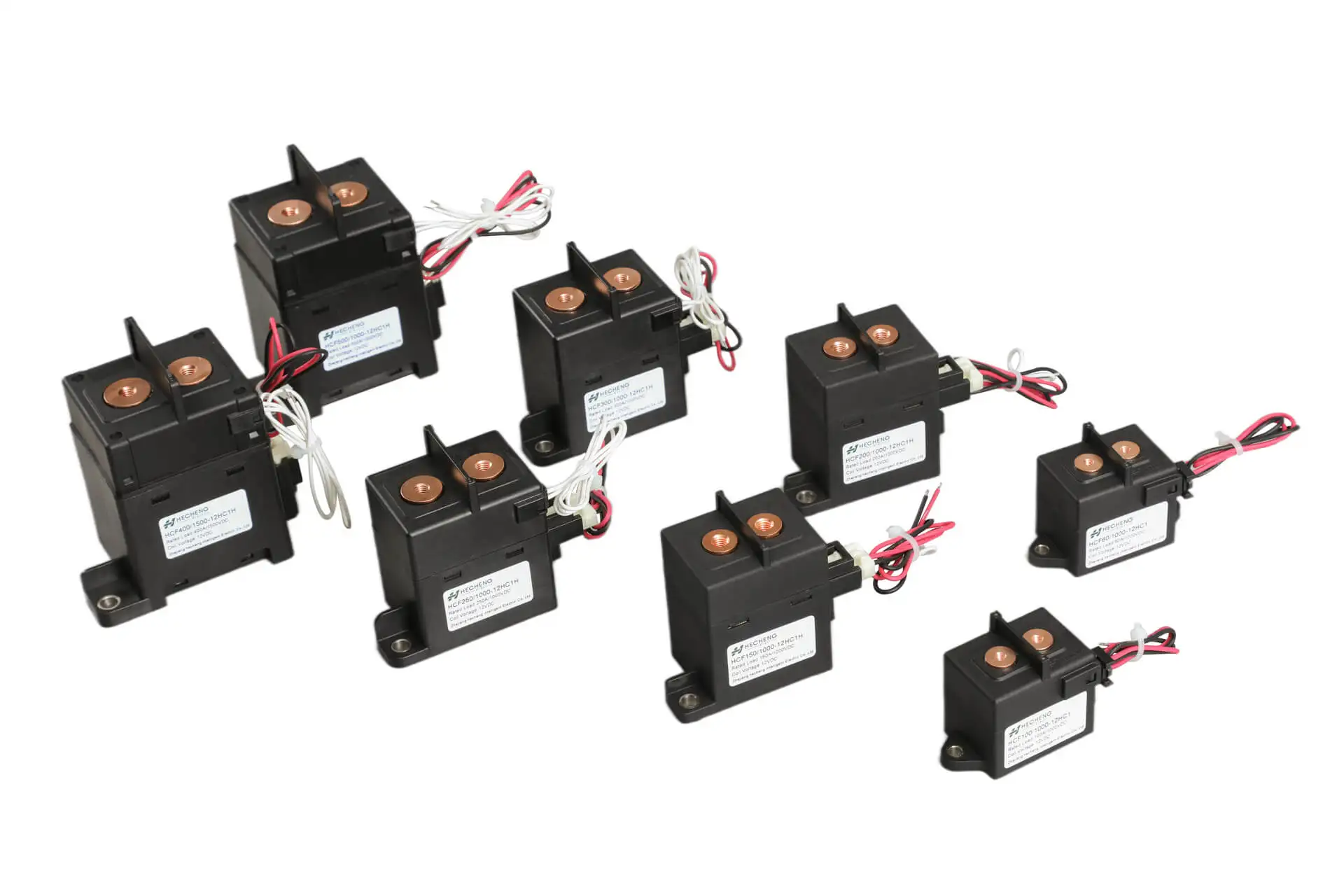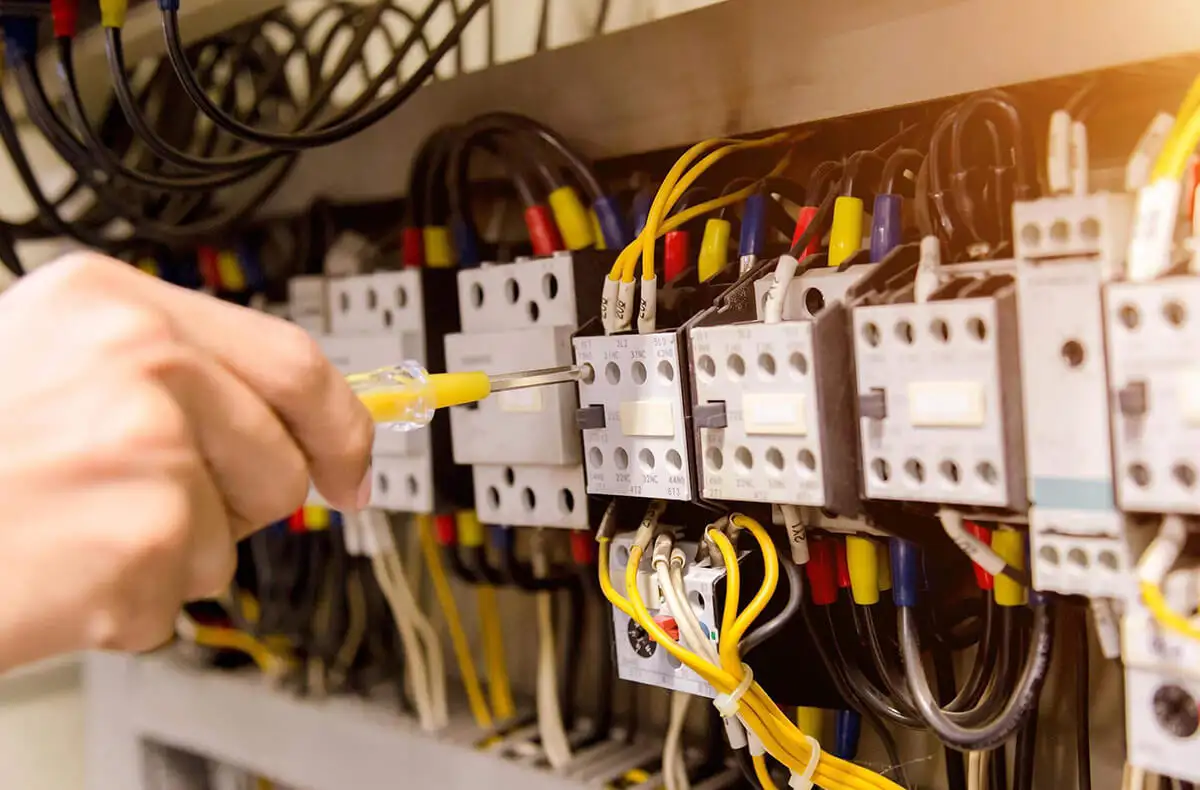Introduction
High Rupture Capacity (HRC) fuses are really important for protecting electrical circuits and equipment from excessive current flow, which can lead to catastrophic damage and failures.
These fuses are special because they can quickly stop really strong electric currents without hurting the surroundings. This article will talk all about what makes HRC fuses special, why they’re good, and how they’re used in real life.
What are HRC Fuses?
High Rupture Capacity (HRC) fuses are crucial in electrical systems. They protect against catastrophic damage caused by excessive current. The fuse contains a fusible element in a heat-resistant casing. This element, often silver, melts under high currents, disconnecting the circuit and preventing harm to connected equipment.
Working Principle of HRC Fuses
Under typical operating conditions, the current passing through the fuse lacks the requisite energy to cause deformation in the fuse element. However, when a substantial current surpasses the fuse, it leads to the melting of the fuse element before reaching the peak fault current.
In instances of overload, the fuse element does not blow off immediately. However, prolonged exposure to overload conditions can result in the dissolution and fracture of the fuse element, especially in materials like Eutectic.
In the event of a short circuit, the thinner sections of the fuse element, having less area, dissolve rapidly and fracture before the eutectic material. This underscores the necessity for imposing limitations on the fuse element within the High Rupture Capacity (HRC) Fuse design.
Construction of HRC Fuses
The construction of an HRC fuse involves the utilization of a highly heat-resistant material such as ceramic for its body. This ceramic body is outfitted with metal end caps, securely welded to an element carrying silver-based current.
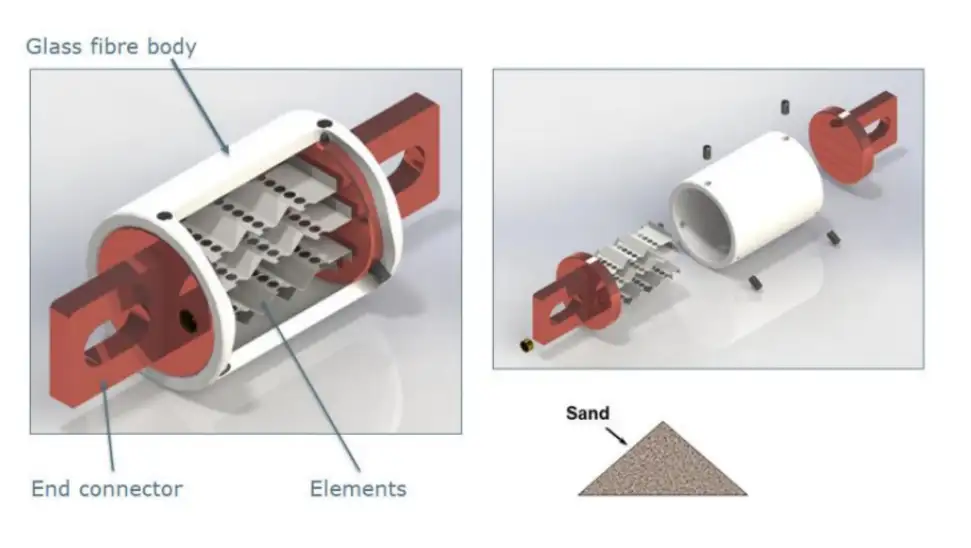
Internally, the fuse body is filled with a powder material, typically consisting of quartz, plaster of Paris, dust, marble, and similar substances. This filling material serves to regulate the flow of current and prevents overheating. Any generated heat vaporizes the melted element, initiating a chemical reaction between the filling powder and silver vapor, which produces a high-resistance material that aids in reducing the arc within the fuse.
Typically, copper or silver is employed as the fuse element due to its low specific resistance. This element is often composed of two or more sections, connected via tin joints. The melting point of tin, at 2400℃, is lower than that of silver, which is 980℃. Thus, the tin joints act as temperature safeguards, preventing the fuse from reaching excessively high temperatures during short circuit and overload conditions.
Types of HRC Fuses
- l NH Type Fuse
- l Din Type Fuse
- l Blade Type Fuse
NH Type Fuse
Providing protection against short circuits and overloads in low and medium voltage scenarios, these fuses serve as a shield for motor starters and various other devices, guarding them against the hazards posed by overloading and short-circuit conditions. Moreover, their compact and lightweight construction renders them a pragmatic and durable option for diverse applications.
Din Type Fuse
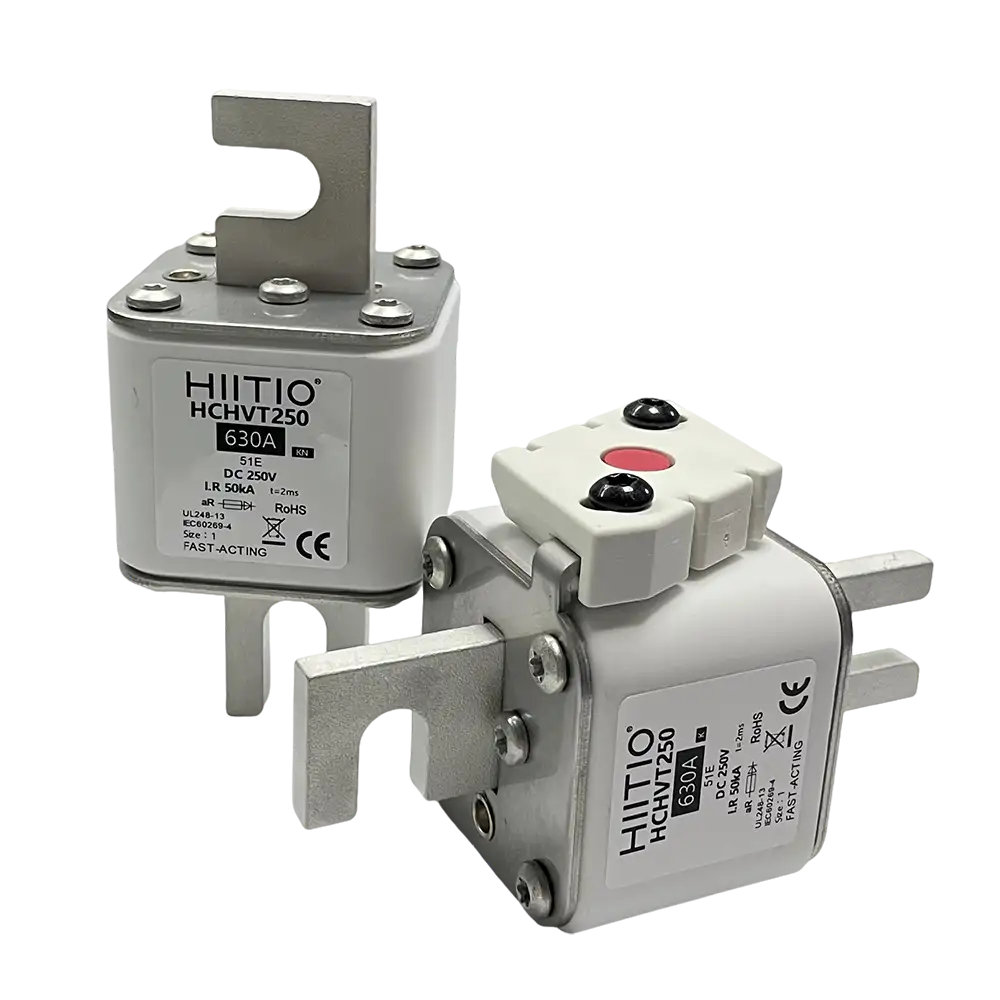
DIN-type fuses come in a diverse array of rated currents, tailored to meet various needs. Each fuse is meticulously crafted with specific attributes suited for varying temperature conditions. These fuses are adaptable, capable of accommodating different voltage levels and prove invaluable for transformer protection, even in scenarios lacking Low-Voltage (LV) secondary or backup protection.
Renowned for quickly handling small overcurrents, DIN fuses perform well in short circuits. They work in various settings like switchgear, mining, and transformers.
Blade Type Fuse
Referred to as plug-in or spade fuses, this particular type of fuse is distinguished by its plastic body and two metal caps, designed for easy insertion into a socket. Predominantly found in automotive applications, these fuses offer safeguarding against wiring short circuits and are frequently employed in motors to bolster protective measures.
With a lightweight build and low cutoff current, blade fuses vary in size and shape. Each has distinct current rating abilities.
Advantages of HRC Fuses
HRC fuses present numerous advantages compared to traditional fuse designs, including:
- High interrupting capacity: HRC fuses possess the capability to safely interrupt high fault currents, thereby significantly reducing the possibilities of damage to the circuit and surrounding equipment.
- Compact size: Because of their efficient design and construction, HRC fuses can be much smaller than regular fuses of comparable ratings. This is great for places where there’s not a lot of room to spare.
- Low energy let-through: The fast melting speed of HRC fuses minimizes the energy let-through to the fault, effectively mitigating potential damage caused by the fault current.
- Reliable performance: The precise adjustment of the fuse ensures steady performance, protecting your devices reliably.
Application of HRC Fuses
HRC fuses serve diverse roles across multiple industries, including:
- Industrial control circuits: Integrated into motor control centers, switchgear, and control panels, HRC fuses shield associated equipment from overcurrent and short circuit occurrences.
- Power distribution systems: Employed within power distribution networks, HRC fuses safeguard critical components such as transformers and feeder lines against damage caused by high fault currents.
- Renewable energy systems: In solar and wind power generation setups, HRC fuses provide protection against overcurrent events resulting from energy generation fluctuations and grid disturbances.
- Transportation: HRC fuses play a crucial role in various industries like railways, electric vehicles, and aerospace. They protect sensitive electronics and power equipment from electrical faults, ensuring safety and reliability.
Selection and Specification of HRC Fuses
When choosing an HRC fuse for a specific use, consider key factors:
- Rated current: Choose a fuse with a rated current aligned with the normal operating current of the circuit or device under protection.
- Breaking capacity: Verify that the chosen fuse boasts a breaking capacity adequate to safely interrupt the highest potential fault current encountered within the application.
- Operating voltage: Ensure the selected fuse carries an operating voltage rating compatible with the supply voltage of the circuit.
- Time-current characteristics: Assess the time-current characteristics of the fuse to ascertain its appropriateness for the specific application. This involves examining the fuse’s response time to overcurrent occurrences and its resilience against transient currents, preventing premature activation.
- Physical dimensions: Confirm that the fuse’s size and form factor harmonize with the available space and mounting prerequisites of the application.
Conclusion
High Rupture Capacity (HRC) fuses are crucial for protecting electrical circuits and equipment. With their distinctive design and functionality, they possess the capability to effectively interrupt high fault currents, rendering them a dependable option across diverse applications. By meticulously selecting and specifying HRC fuses, optimal performance, and protection can be ensured, thereby enhancing the overall safety and efficiency of electrical systems.

